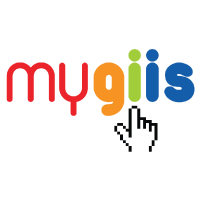Download our FREE Academic Calendar now! 📚 Start your child’s journey to success.
In today’s digital age, the traditional library is no longer the only option for students seeking information and knowledge. The emergence of electronic libraries or e-libraries has transformed the way students access information, making it easier, quicker and more convenient to find and retrieve information than ever before.
The importance of e-libraries for students cannot be overstated. It allows students to access information from anywhere, at any time, with just a few clicks of a mouse or taps on a screen. E-libraries offer a wealth of resources that can help students broaden their knowledge, improve their research skills, and boost their academic performance. Students can also access digital materials that may not be available in traditional libraries, providing them with access to the latest information and research in their field of study.
Moreover, e-libraries can help students save money by eliminating the need to purchase costly textbooks and reference materials.
What is E-Library Or Digital Library And Its Purpose?
An e-library or digital library is a collection of digital resources that are accessible to users via the internet. These resources can include books, articles, journals, research papers, multimedia materials, and other types of content. The purpose of an e-library is to provide users, including students looking for the best primary school, with easy and convenient access to a vast array of information from anywhere and at any time. E-libraries also provide benefits such as cost-effectiveness, space-saving, and the ability to search and retrieve information quickly and efficiently. They are particularly useful for students, researchers, and professionals who need access to up-to-date information and resources for their work.
What Are The Types Of Digital Library?
There are several types of digital libraries, including:
Academic Digital Libraries:
These are digital libraries that support academic research and education. They typically contain scholarly resources such as journals, research papers, and academic books.
Public Digital Libraries:
These are digital libraries that provide access to resources for the general public. They may contain resources such as e-books, audiobooks, and online magazines.
Specialized Digital Libraries:
These are digital libraries that focus on a particular topic or subject area. Examples include medical digital libraries, legal digital libraries, and digital libraries for the arts.
National And International Digital Libraries:
These are digital libraries that are created by governments or international organizations to provide access to information and cultural heritage. Examples include the Library of Congress and the European Digital Library.
Corporate Digital Libraries:
These are digital libraries created by organizations for their employees or customers. They typically contain resources such as training materials, technical documents, and marketing materials.

What Are The Features Of A Digital Library?
Here are some of the key features of digital libraries:
Access To Digital Resources:
Digital libraries provide users with access to a wide range of digital resources such as e-books, audiobooks, videos, images, research papers, and academic journals.
24/7 Availability:
Digital libraries are available to users 24/7, providing them with convenient access to resources from anywhere and at any time.
Search And Retrieval:
Digital libraries provide users with powerful search tools that allow them to quickly and easily find the resources they need.
Remote Access:
Users can access digital libraries remotely using their personal devices such as computers, tablets, or smartphones.
Cost-Effective:
Digital libraries are often more cost-effective than traditional libraries as they eliminate the need for physical space, maintenance, and staffing.
Personalization:
Digital libraries allow users to customize their experience by creating personalized accounts, saving their search history, and setting up alerts for new resources.
Preservation:
Digital libraries enable the preservation of cultural heritage and information by digitising and archiving rare or fragile materials for future generations.
Importance Of A Digital Library For Students
● It Gives The Reader Access To Up-To-Date Information
An e-library provides the reader with access to up-to-date information on various topics. With digital resources updated regularly, readers can stay informed with the latest research and developments in their field of interest.
● No Fixed Or Rigid Time Limit
Digital libraries have no fixed or rigid time limit, allowing users to access resources at any time and from any location. This flexibility makes it easy for users to study or conduct research at their own pace and convenience.
● It Preserves Resources And Knowledge
Digital libraries play a crucial role in preserving resources and knowledge for future generations. By digitising rare or fragile materials, digital libraries ensure that these resources are available to researchers and students worldwide, thus contributing to the preservation of cultural heritage and intellectual property.
● It Is Easily Accessible
Digital libraries are easily accessible to users, as they can access resources remotely using their personal devices. This accessibility eliminates the need for users to visit physical libraries, saving them time and effort while ensuring that they have access to a vast array of digital resources from anywhere and at any time.
● Improves Interaction In Real-Time
Digital libraries enable real-time interaction among users by facilitating collaboration, discussion, and sharing of resources. With the use of online forums, chat rooms, and other interactive tools, users can connect with each other, share ideas, and engage in meaningful discussions, thereby enhancing their learning experience.
● Automated Library Management
Digital libraries employ automated library management systems that help in the efficient organization, storage, and retrieval of digital resources. These systems automate routine tasks such as cataloguing, indexing, and archiving, freeing up library staff to focus on more important tasks such as user support and collection development.
● Quick Access
Digital libraries provide users with quick access to resources, with powerful search tools that enable users to quickly and easily find the information they need. This quick access saves users time and effort, making it easier for them to conduct research or study efficiently.
● 24/7 Availability
Digital libraries are available to users 24/7, eliminating the need to worry about library opening hours. Users can access digital resources at any time and from any location, making it convenient for them to study, conduct research, or access information whenever they need it.
● Collaboration
Digital libraries facilitate collaboration among students by allowing them to share resources, discuss ideas, and work together on projects.
● Environmental Sustainability
Digital libraries contribute to environmental sustainability by reducing the use of paper and other resources required for traditional libraries.
Conclusion
E-libraries or digital libraries play a crucial role in providing school admission in noida students with access to a vast array of digital resources, which can enhance their academic performance and broaden their knowledge. Digital libraries are cost-effective, convenient, and easily accessible, with powerful search tools that enable students to find information quickly and efficiently.
Digital libraries also provide real-time interaction, collaboration, and sharing of resources, which can improve students’ research skills and learning experience. Moreover, digital libraries contribute to environmental sustainability by reducing the use of paper and other resources required for traditional libraries, while also preserving cultural heritage by digitising and archiving rare or fragile materials for future generations. In today’s digital age, digital libraries are an indispensable resource for students seeking to excel in their academic pursuits.
FAQs
What is The Difference Between E-Books Ad E-Library?
E-books are individual digital books that can be downloaded or accessed online, while e-library is a digital library that provides access to a vast array of digital resources, including e-books, journals, databases, and other digital materials. Essentially, e-books are a subset of the resources available in an e-library.
What Are The Examples Of Digital Library?
Some examples of digital libraries include Project Gutenberg, HathiTrust Digital Library, Google Books, Internet Archive, Digital Public Library of America, and the National Digital Library of India.
What Are Digital Library Tools?
Digital library tools are software applications designed to support various activities in a digital library, such as resource discovery, metadata management, digitization, preservation, and user access. Examples of digital library tools include content management systems, digital asset management systems, discovery tools, preservation systems, metadata editors, and access management systems.
What is The Impact Of Digital Library On Students And School?
Digital libraries have a significant impact on students and schools, providing convenient access to a vast array of digital resources and enhancing the learning experience. They enable efficient research and study, facilitate collaboration among students, and contribute to environmental sustainability. Digital libraries also help schools to reduce costs and improve resource management, while enhancing the school’s reputation by providing access to high-quality digital resources.
What is The Future Of The Digital Library?
The future of the digital library is likely to involve continued expansion and improvement of digital resources and services, increased integration with emerging technologies such as artificial intelligence and machine learning, and further development of innovative approaches to digital preservation and access.
Are There Any Disadvantages Of Digital Library?
Yes, there are some disadvantages of digital libraries, such as the potential for technical glitches, limited access for those without internet connectivity, and concerns about the long-term preservation and accessibility of digital resources. There are also potential issues related to copyright and intellectual property rights.




































